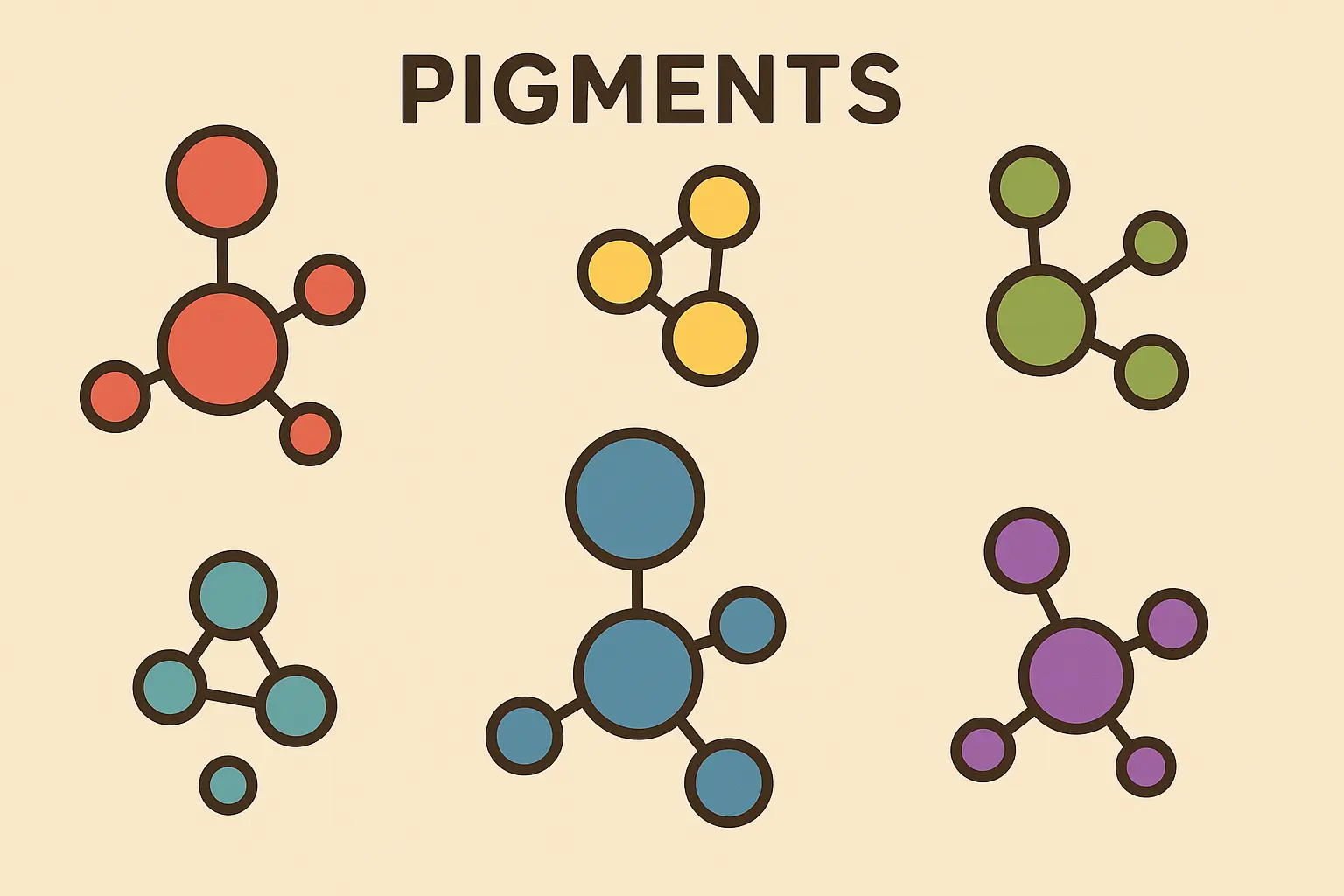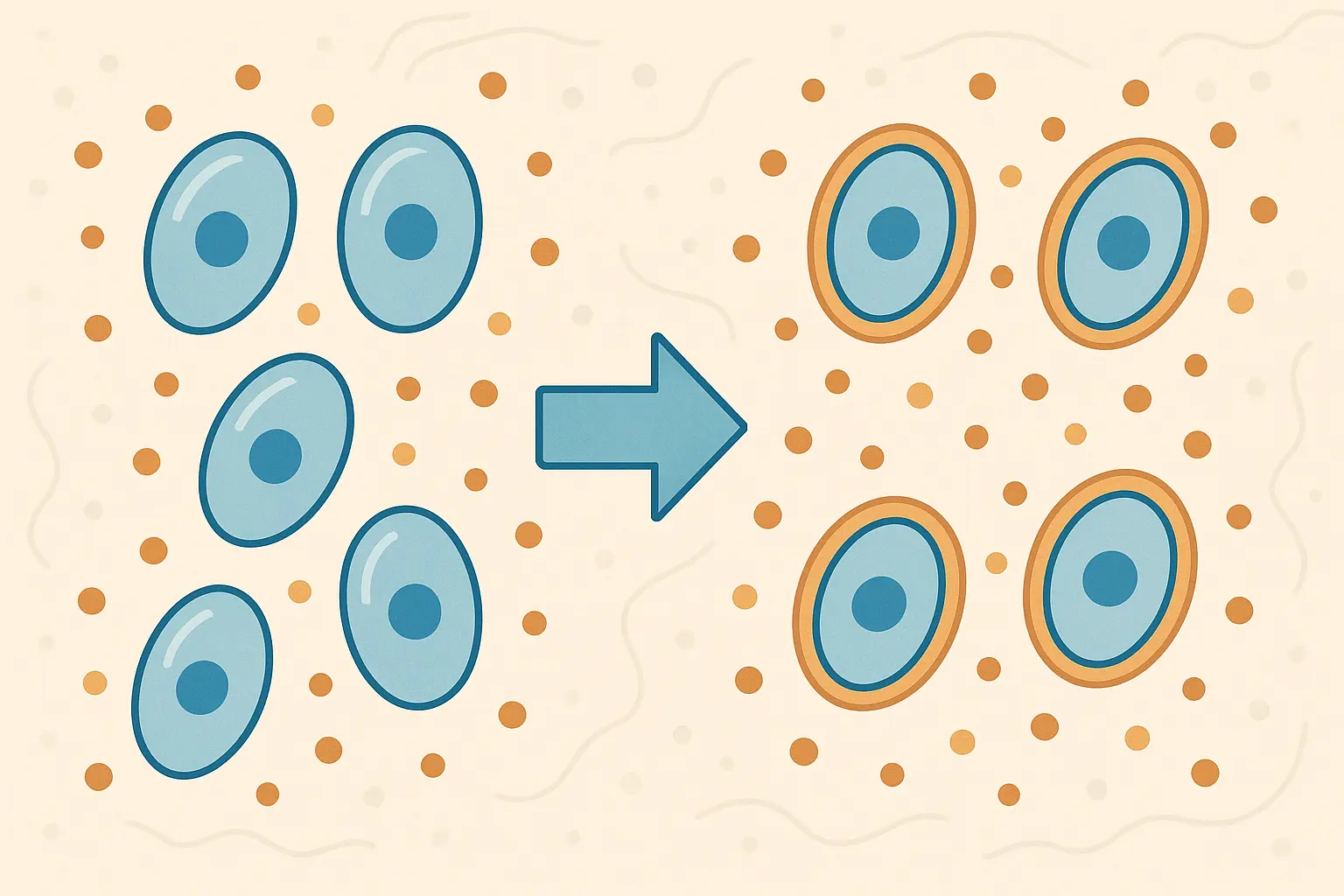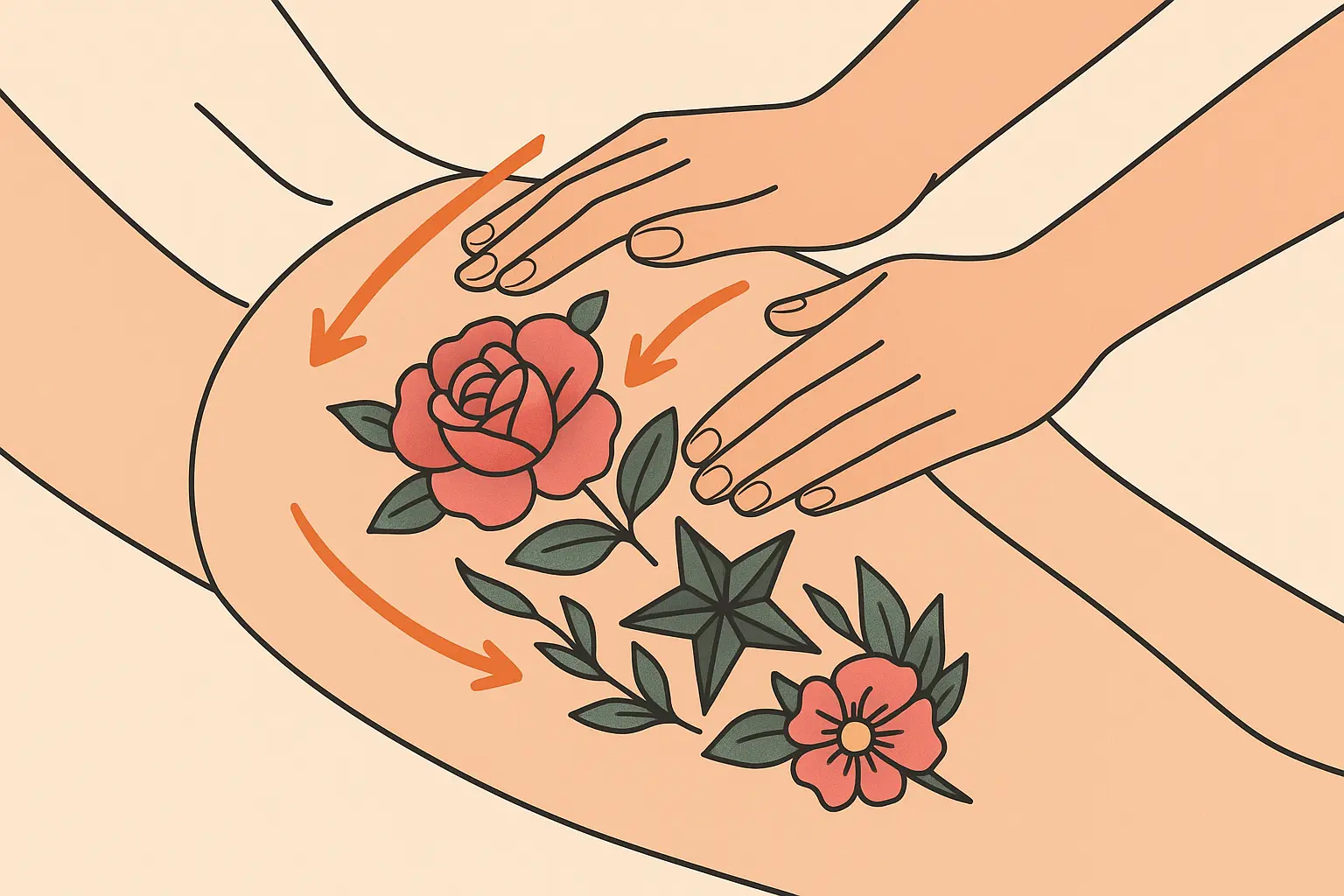Saline Tattoo Removal: The Science Behind Why Salt Water Actually Works (And Why Everyone’s Talking About It)

Table of Contents
-
Why Saline Removal is Making a Comeback
-
The Osmotic Magic: How Salt Water Pulls Ink From Your Skin
-
Breaking Down the Cellular Process
-
Why Different Tattoo Inks React Differently
-
The DIY Disaster: Why Home Treatments Go Wrong
-
Modern Professional Techniques That Actually Work
-
Your Body’s Sneaky Defense Mechanisms
-
The Aftercare Game-Changer
-
Hidden Health Risks You Need to Know About
-
How Smart Tattoo Planning Prevents Removal Headaches
TL;DR
-
Saline removal works by creating osmotic pressure that forces tattooed cells to release ink naturally
-
Professional solutions use 20-30% salt concentration (way higher than your body’s 0.9% natural level)
-
Different ink types respond differently – organic pigments come out easier than synthetic ones
-
DIY treatments are dangerous due to infection risks and improper solution preparation
-
Your body adapts to repeated treatments, making each session less effective
-
Proper aftercare involves maintaining osmotic conditions for 48-72 hours post-treatment
-
Common medications can dramatically alter how your skin responds to treatment
-
Smart tattoo planning with professional design tools reduces the need for removal
Why Saline Removal is Making a Comeback
Look, I’ve been in this business for a while, and honestly, watching saline removal come back has been wild. Most people still think laser is the only “real” way to get rid of a tattoo, but that’s changing fast. Companies like Removery have completed over 1.6 million tattoo removal treatments across the United States, Australia, and Canada, which shows you just how many people are dealing with tattoo regret.
Here’s the kicker – saline isn’t some new trendy thing. It’s been around forever. We just finally figured out the science behind why it actually works. Modern saline removal is like the difference between throwing rocks at a window and using a precision tool to carefully remove the glass. We’re not just rubbing table salt on your skin and hoping for the best (please, for the love of all that’s holy, don’t try that at home).
So what exactly is saline tattoo removal? Think of it like this – we use a super-concentrated salt solution to basically convince your tattooed skin cells to give up their ink. Instead of blasting your skin with intense heat and light like laser tattoo removal does, we’re working with your body’s natural processes. It’s like being a really good negotiator instead of a bulldozer.
Understanding the psychology behind removal decisions becomes crucial when considering any permanent body art changes, as explored in our guide to tattoo removal psychology and the complex emotional factors involved.
The Osmotic Magic: How Salt Water Pulls Ink From Your Skin
Okay, here’s where it gets cool. When I put that concentrated salt solution into your tattooed skin, I’m creating what scientists call an osmotic gradient. But forget the fancy words – imagine your tattooed cells are like tiny water balloons filled with ink. The super-salty solution outside makes those cells desperately want to give up their water.
Your body normally runs at about 0.9% salt – think of it like lightly salted water. Professional solutions? We’re talking 20-30% salt. That’s like the difference between a light sprinkle on your fries and dumping the entire salt shaker. This massive difference is what creates the pulling force that literally sucks water out of those ink-filled cells.
|
Treatment Type |
Salt Concentration |
Osmotic Pressure |
Typical Results |
|---|---|---|---|
|
Home DIY |
0.9-3% |
Minimal |
Ineffective/Dangerous |
|
Professional Saline |
20-30% |
High |
Effective pigment extraction |
|
Body’s Natural Level |
0.9% |
Baseline |
No removal effect |
|
Medical Saline (IV) |
0.9% |
Isotonic |
Medical use only |
But here’s the tricky part – I need enough salt to get that ink out, but not so much that I basically pickle your skin. It’s like walking a tightrope while juggling. Too little salt and nothing happens. Too much and you’re looking at chemical burns that’ll make you wish you never heard of tattoo removal.
Breaking Down the Cellular Process
Every person’s skin is different, which means every treatment has to be different too. Sarah came in with a delicate wrist tattoo – her skin there is paper-thin, so I had to use a gentler 22% concentration with tiny needles. Then there’s Mike, this construction guy with a shoulder tattoo and skin like leather from years in the sun. His skin could handle 28% concentration with direct injection. Same technique, completely different game plans.
When those cells start dumping their ink, your immune system goes into overdrive. But here’s the beautiful part – this inflammation is actually helping us. Your white blood cells rush in like tiny garbage trucks, scoop up all that released pigment, and haul it away through your lymphatic system.
This is totally different from laser removal, where heat creates chaos and inflammation. With saline removal, the whole process is way more predictable and controllable. It’s like the difference between a controlled demolition and just blowing stuff up.
Your skin isn’t just a flat surface – it’s more like a complex highway system with different layers and pathways. The saline solution follows these natural routes, finding the easiest way through your tissue. But sometimes you hit roadblocks – areas with scar tissue or really dense collagen can be tough to treat.
Before I start any treatment, I need to figure out where your ink actually lives. Surface-level stuff? That comes out pretty easily. But if your tattoo is old and the ink has settled deep, we’re looking at a longer journey with multiple pit stops.
Sometimes I’ll use ultrasound imaging to get a better picture of what we’re dealing with. It’s like having X-ray vision for tattoo removal.
Why Different Tattoo Inks React Differently
Here’s something that’ll blow your mind – not all tattoo inks are created equal, and boy, does that become obvious during saline tattoo removal. Carbon-based black inks? They’re usually the easiest to deal with because they’re basically just simple molecules hanging out in your skin.
But those bright, Instagram-worthy colors – especially the ones with heavy metals – can be stubborn little jerks. The size of the pigment particles matters too. Smaller particles get pushed around more easily by the salt solution, while bigger chunks might need multiple rounds to budge.
|
Ink Type |
Molecular Size |
Saline Response |
Sessions Needed |
|---|---|---|---|
|
Carbon Black |
Small |
Excellent |
3-5 sessions |
|
Organic Red |
Medium |
Good |
4-7 sessions |
|
Synthetic Blue |
Large |
Moderate |
6-10 sessions |
|
Heavy Metal Colors |
Variable |
Poor-Moderate |
8-15 sessions |
|
White/Titanium |
Large |
Poor |
Often ineffective |
Some pigments basically superglue themselves to your skin proteins. When that happens, osmotic pressure alone isn’t enough to break those bonds. That’s when we need to get creative with treatment approaches or consider combo methods.
I had this client, Jennifer, with this gorgeous butterfly tattoo from 2015. The black outline practically melted away after 4 sessions – it was like magic. But those bright purple wings with white highlights? We had to get creative. Sometimes you need to use a gentle laser first to break up the stubborn stuff, then come in with saline to clean up the mess. It’s like using a sledgehammer to crack concrete, then a shop vac to clean up the pieces.
The complexity of ink removal varies significantly based on tattoo design and placement, which is why understanding tattoo pain levels and healing patterns becomes crucial for both initial tattooing and removal processes.
The DIY Disaster: Why Home Treatments Go Wrong
Can I be brutally honest here? The number of people who’ve tried to mix up their own saline solutions at home makes me want to cry. I get it – saline tattoo removal at home seems simple enough, right? Salt plus water equals tattoo removal? Wrong. So incredibly, dangerously wrong.
Professional solutions aren’t just salt and water you mixed up in your kitchen. We’re talking precise pH levels, medical-grade sterility, and stabilizers that prevent your skin from basically dissolving. Your kitchen counter isn’t equipped for this level of chemistry, no matter how clean you think it is.
Recent trends in DIY tattoo removal have become particularly concerning. A “refreshingly personal approach to removal” according to Style Magazine highlights how professional clinics are now offering saline removal as an alternative to laser treatment, emphasizing the need for proper medical supervision.
When you create wounds in your skin (which is exactly what saline tattoo removal does), you’re basically rolling out the red carpet for bacteria. I’ve seen infections that landed people in the hospital because someone thought they could handle this at home. The scarring from these DIY disasters is often ten times worse than the original tattoo.
Trust me on this one – I’ve cleaned up enough kitchen table experiments to know that your bathroom is not a sterile medical environment, no matter how many YouTube videos you’ve watched or how confident you feel.
DIY Safety Checklist (Why These Don’t Work at Home):
-
Sterile preparation environment (your bathroom doesn’t count)
-
Medical-grade saline solution (not available at your local pharmacy)
-
Precise pH buffering (requires actual lab equipment)
-
Emergency medical response capability (911 doesn’t count as backup)
-
Professional wound assessment tools (your bathroom mirror isn’t enough)
-
Infection control protocols (hand sanitizer isn’t a substitute)
Understanding proper tattoo aftercare becomes even more critical during removal processes, as the healing requirements are significantly more complex than initial tattoo care.
Modern Professional Techniques That Actually Work
Micro-needling has completely revolutionized how we deliver saline tattoo removal solution. Instead of just slapping it on the surface and crossing our fingers, I’m creating precise little highways that let the solution reach exactly where it needs to go.
The needle setup matters big time – different tattoos need different approaches. A delicate script tattoo gets treated like fine china, while a heavy blackwork piece can handle a more aggressive approach.
For those really stubborn tattoos – especially ones with scar tissue or super-dense pigmentation – I sometimes use pressure-assisted systems. Think of it like using a pressure washer instead of a garden hose. These can push the solution through barriers that would normally laugh at regular treatment.
Sometimes I’ll tag-team it – use a gentle laser treatment first to break up larger chunks of pigment, then follow up with saline removal to sweep up the debris. This combo approach can seriously cut down on the total number of sessions, which saves you time, money, and sanity.
Reports from Brisbane clinics show that “saline-based products help pull out the pigment during the scabbing process” according to Style Magazine, with multiple sessions typically required for complete removal.
Your Body’s Sneaky Defense Mechanisms
Here’s something that blew my mind when I first learned about it – your cells are smart. Like, really smart. After that first saline tattoo treatment, they start building their own little fortress walls. They’re basically saying, “Oh, you want to mess with us? Not happening again.”
This adaptation can kick in within 48-72 hours of treatment. That’s why timing between sessions is absolutely critical. Wait too long, and those cellular defenses get stronger. It’s like your skin is learning to resist our removal attempts.
Your cell membranes literally toughen up after each treatment. They change their structure to resist that osmotic pressure. From a science standpoint, it’s actually pretty amazing. From a “trying to remove your tattoo” standpoint, it’s frustrating as hell.
The type of healing you do between sessions can make or break future treatments. Good, flexible healing keeps things accessible. But if your body goes into overdrive and creates dense scar tissue, that’s like building a fortress around the remaining ink.
This is where proper aftercare becomes absolutely crucial – and I mean CRUCIAL. How you heal determines whether your next session will work or whether we’ll be fighting an uphill battle.
The healing process involves complex tissue responses that mirror what happens during initial tattoo application, which is why understanding the tattoo peeling process and normal healing patterns becomes essential for successful removal outcomes.
The Aftercare Game-Changer
The real work doesn’t stop when you walk out my door. Those first 48-72 hours are when the magic actually happens, and we need to keep that salt environment just right. Too much moisture kills the whole extraction process, but too little can cause tissue death. It’s like Goldilocks – everything has to be just right.
Understanding does saline tattoo removal work often comes down to this critical aftercare period. The saline tattoo extraction continues long after the initial application.
I use specialized dressings that automatically regulate moisture levels, plus specific hydration schedules that change as you heal. It’s not just “keep it clean and dry” – it’s way more complex than that.
Professional Aftercare Protocol:
-
Day 1-2: Special dressings that keep the salt doing its job
-
Day 3-5: Moisture-regulating bandages (not your drugstore Band-Aids)
-
Day 6-10: Specific hydration schedule that changes daily
-
Day 11-14: Lymphatic drainage massage (I’ll teach you the technique)
-
Day 15-21: Healing support supplements
-
Week 4-6: Assessment and planning for the next round
Your lymphatic system is basically your body’s garbage truck – it hauls away all that released pigment. But sometimes it needs help. I teach specific massage techniques that follow your natural drainage pathways to keep things moving. Timing matters though – do it too early and you mess up the healing, too late and the pigment might settle back in.
Some natural compounds can actually boost your lymphatic system. Horse chestnut extract and butcher’s broom aren’t just fancy names – they actually help your drainage vessels work better. When I add these to aftercare protocols, people see faster clearing and need fewer total sessions.
According to Love Spell Cosmetic Tattoo Beauty, saline removal is ideal for smaller tattoos and cosmetic tattoos, but anything larger than 3×3 inches should seek laser removal instead.
Hidden Health Risks You Need to Know About
You’d be shocked how many everyday medications can completely mess with saline tattoo removal. That blood pressure medication you’ve been taking for years? It might totally change how your skin responds to treatment.
Diuretics are particularly tricky because they’re already messing with your body’s water balance. Add the stress from tattoo removal solution, and things can get unpredictable fast. Beta-blockers don’t just slow your heart rate – they can also dampen your inflammatory response, which means I might need stronger concentrations or longer treatment times.
On the flip side, ACE inhibitors can make your tissue super-sensitive to the salt solution. I’ve had to completely rewrite treatment protocols for people on these meds to prevent tissue damage.
Diabetes changes everything about how your body heals and responds to treatment. Your blood sugar levels need to be rock-solid stable before I’ll even consider saline removal. Even then, I’m using gentler concentrations and watching like a hawk for infection signs.
The healing timeline is completely different too. What might take two weeks for someone without diabetes could take a month or more for someone managing the condition.
I had this client, Maria, a 42-year-old with Type 2 diabetes who wanted to remove a small ankle tattoo. Her A1C was 8.2% – way too high for safe treatment. We had to wait three months while she worked with her endocrinologist to get her levels under control. Once her A1C dropped to 6.8%, we proceeded with a modified protocol using 18% saline concentration instead of the standard 25%, with extended healing periods between sessions. The extra precautions were totally worth it – she healed beautifully with no complications.
The growing awareness of saline removal risks is evident in professional practices. As noted in a Refinery29 article, “There are ways to get rid of a bad microblading job, laser tattoo removal being the most common. However, there are also saline-based products out there that you inject into the skin — just like you do the pigment during the microblading process — which helps pull out the pigment during the scabbing process. It can take multiple sessions.”
How Smart Tattoo Planning Prevents Removal Headaches
Here’s the truth – the best tattoo removal is the one you never need. I’ve seen too many people rush into tattoos without really thinking through the design, placement, or what it’ll look like in 10 years.
When you can work with artists digitally, test different placements, and really understand what you’re signing up for, you’re way less likely to end up in my office asking about saline tattoo removal. Plus, understanding proper aftercare and healing from the start leads to better-looking tattoos that age well.
Looking at saline tattoo removal before and after results can be pretty sobering – even successful removals often leave some trace of the original tattoo. Prevention through smart planning beats correction through removal every single time.
Professional tattoo removal has become increasingly sophisticated, with industry leaders like Removery utilizing “quantitative and qualitative methods drawing from internal databases, clinical studies, and client surveys, as well as data spanning over 1.6 million tattoo removal treatments from 2019-2024” to improve their techniques.
The importance of thoughtful tattoo placement becomes evident when considering future removal needs, which is why understanding tattoo pain levels across different body areas helps inform both initial placement decisions and potential removal challenges.
Final Thoughts
The world of saline tattoo removal has come a long way from crude salt-rubbing methods. What we’re doing now is real science – understanding how cells work, pressure systems, and tissue engineering to safely remove unwanted ink.
But here’s the thing – removal should always be your last resort. The best tattoo removal is the one you never need. Whether you’re dealing with an existing tattoo that needs to go or planning your next piece, making informed decisions is what matters most.
If you’re considering saline solution tattoo removal, find someone who really gets the science behind it. Ask about their protocols, their experience with your specific type of tattoo, and what realistic expectations look like. And if you’re planning new ink, take the time to really think it through – your future self will thank you.
Whether you’re considering removal or planning new ink, understanding the financial implications helps make informed decisions, which is why exploring tattoo cost factors becomes essential for long-term satisfaction with your body art choices.








